How engineer and promoter Bob Barnard created a MotoGP classic at Phillip Island
Phillip Island is celebrating it’s 30th anniversary as a MotoGP racetrack. Wayne Gardner, who won the first race, was central to the promotion but it was engineer Bob Barnard who brought the race to life.
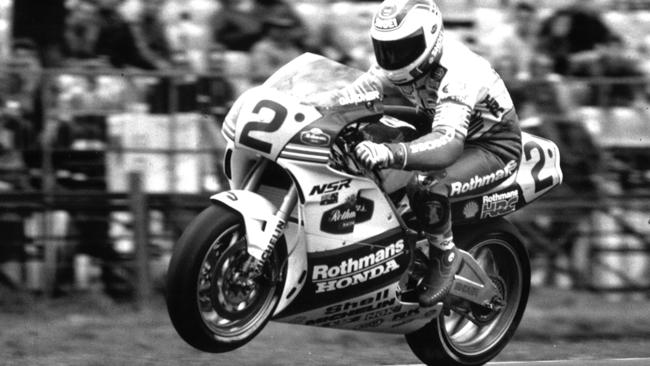
Wayne Gardner remembers the crowd, the exhaustion, the aching wrists, but most of all he recalls the euphoria of winning the first Australian Motorcycle Grand Prix at Phillip Island.
Gardner, who had won the world 500cc (precursor to the MotoGP class) championship two years before, fulfilled a childhood dream of competing in the first Australian Grand Prix. “And I dreamed I would win it,’’ he said after the chequered flag.
This year marks the 30th anniversary of the island’s debut as a world motorcycle racetrack. Phillip Island is now a much-loved and much-anticipated venue for the annual MotoGP caravan.
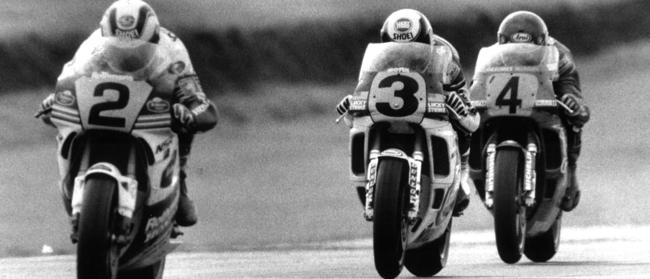
It’s easy to forget that it’s a comparative newcomer to the race calendar.
But while Gardner was the face of the race, engineer and promoter Bob Barnard was the man credited with bringing the event to life — negotiating leases, contracts, TV deals, sponsorships and perhaps most importantly, rebuilding the circuit.
Barnard’s company Barfield and a few investors put up most of the $5 million to revive the neglected circuit. They received nothing from the state government.
Barnard said it was a massive effort, securing council and EPA approvals, sign-off from international governing bodies, getting the track surfaced (twice) and making sure everything was in place, from drains to toilets, fences to signs.
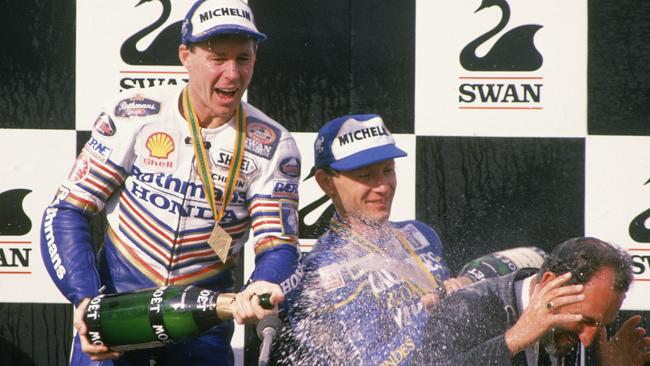
“I never lost faith that we would get it done, but raising the money to rebuild the track was a huge problem,’’ Barnard told the Sunday Herald Sun.
In the end, Channel 9 broadcast 10 hours on live TV over the weekend, Swan signed on as beer sponsor and Victorian Premier John Cain attended, despite reservations about some of the teams’ tobacco sponsors.
The Sun published a four-page wraparound on the morning after.
“I had about five minutes when I could enjoy it when on the winners’ rostrum,’’ Barnard said. “The rest was just hard work and worrying about how to find the support to keep going.’’
Despite strong ticket sales and Gardner’s drawcard promotion, organisers were not really sure how many people would come.
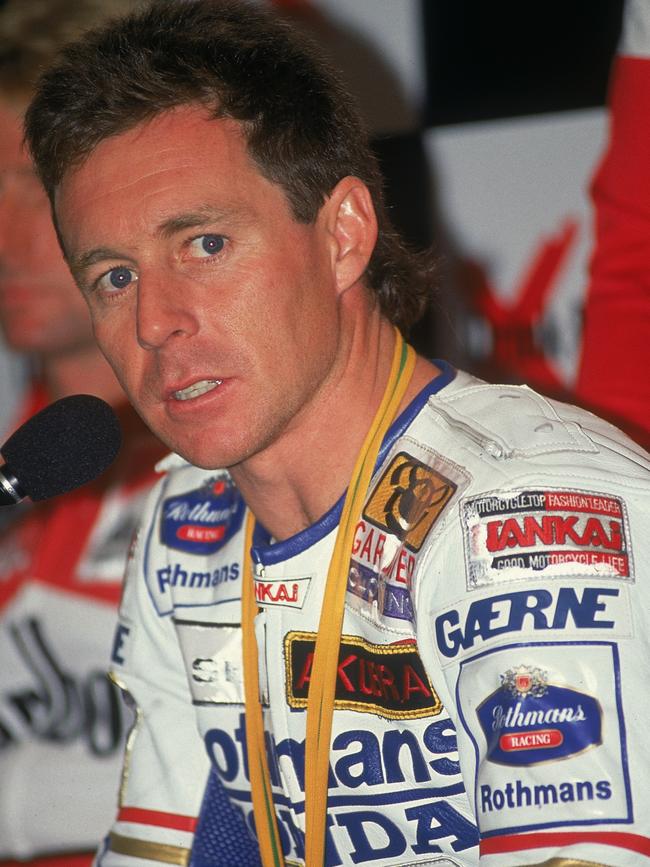
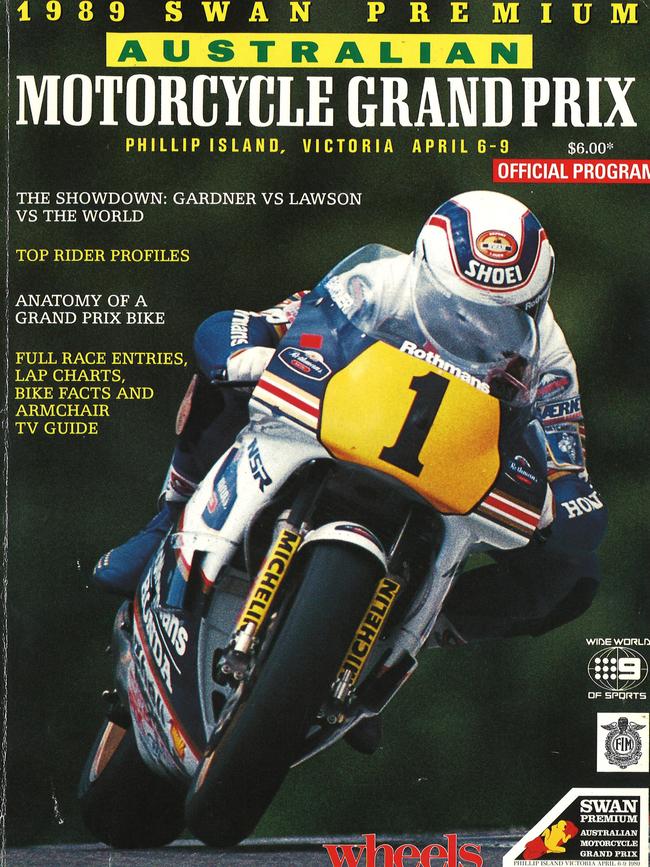
Yet they did, in droves. Thousands caught the ferry from Hastings to Cowes and then walked to the circuit. A continuous motorbike convoy rolled across the bridge at San Remo. Fears of traffic gridlock on race-day morning — when the crowd was estimated at 105,000 — were averted because so many patrons were already there.
The circuit campground and neighbouring farms put up thousands of campers, earning the Australian race the mantle of the “Woodstock of GPs”.
Live stream the 2019 MotoGP World Championship on KAYO SPORTS. Every practice, qualifying & race Live & On-Demand in HD. Get your 14 day free trial >
Many doubted the island’s capacity to host a major event, because it only had a two-lane bridge to get there, to which Barnard replied: “The Isle of Man TT was the most famous motorcycle race, and that had no bridge at all!”
The island is now a benchmark for motorcycle circuits; the riders love its fast, flowing corners punctuated by two hairpins. Few tracks are as scenic — riders barrelling down the main straight only see Bass Strait water ahead, before they drop right into turn one.
On the back of his world 500cc world title, Gardner was recruited by Bernard to promote the event.
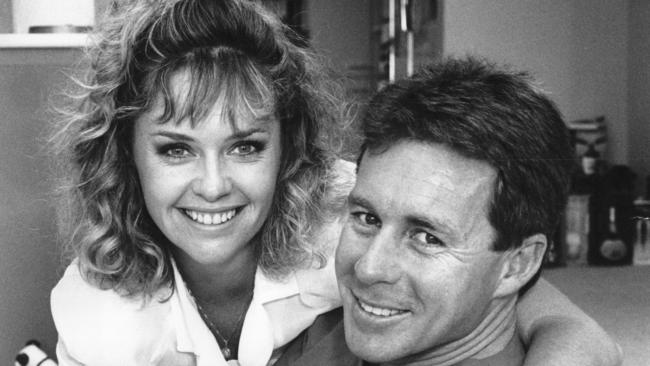
“Bob came to me and said, ‘Can you help me out?’ He said, ‘I need you to do a lot of marketing to get this thing off the ground’,’’ Gardner said.
“I put in about three or four months of running around the country trying to build a profile and explain what they’re going to do and have the first world GP in Australia.’’
By the time the race came, Gardner was on the brink of exhaustion.
“I just never stopped travelling for three to four months and talking to people and radio stations and newspapers and magazines and it just went on and on and all around Australia,’’ he said.
On the Saturday, not even a crash in practice could slow Gardner’s momentum.
“(German rider) Michael Rudroff crashed in practice at the bottom of Lukey Heights right in front of me and I ran over him and landed on the side of his bike,” Gardner said.
“It didn’t dent me much. I picked the bike up, it wasn’t my fault and got going again.’’
Gardner qualified his Honda on the front row with American Kevin Schwantz on a Suzuki on pole.

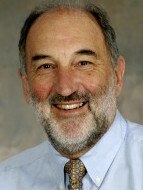
“I walked out on the day and I said to (girlfriend) Donna, ‘I don’t know how I’m going to do this today. I’ve got no energy, I’m just tired’. And she said, ‘You can do it. Just get out there and forget it and have fun’.’’
As it turned out the race itself lived up to the hype. A total of 18 lead changes — mostly Gardner, Wayne Rainey and Christian Sarron — over 30 laps.
Schwantz went down on the second lap and Gardner threw his bike around, shredding his tyres in search of a fairytale victory.
“It was a really hard race,’’ Gardner said.
“But once I saw the crowd, I could see them in my peripheral vision, you could feel it and that’s very inspiring to keep pushing yourself. And even when you get tired, you’re wrists are sore or whatever, it pushes you on and it’s very inspiring and pushes you on to things that you can’t believe you can do.
“When you see your home crowd and your friends and fans out there yelling and screaming ‘good on you Wayne’ it pumps you up and you never forget that.’’
After the race, Gardner rolled the Honda up the straight, which would later bear his name, to the memorable sight of his girlfriend running down the tarmac to congratulate him.
Gardner and Barnard were relieved to have pulled off a great sporting coup.
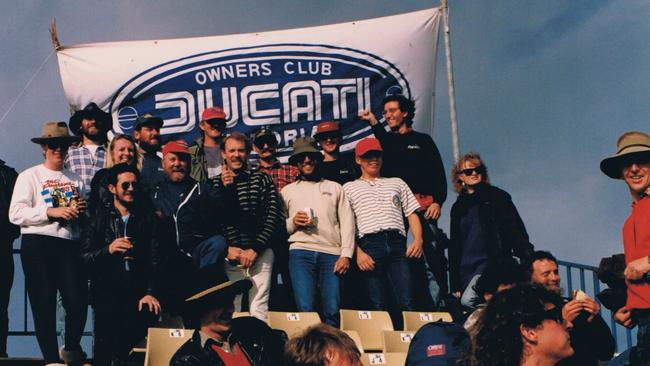

Despite the huge crowds, traffic and the reputation of “bikie” violence, police praised spectators for their behaviour.
The Victorian Ducati Club was among many set up in the campground where then club treasurer Toni Green said they were “knee-deep in mud”.
Premier Cain said the motorcycle fans’ conduct was a model for football crowds.
Barnard, now based in Spain, rarely gets to the island these days but is gratified with what was created in 1989 and that it’s become such a landmark venue.
“Enormously proud,’’ he said.
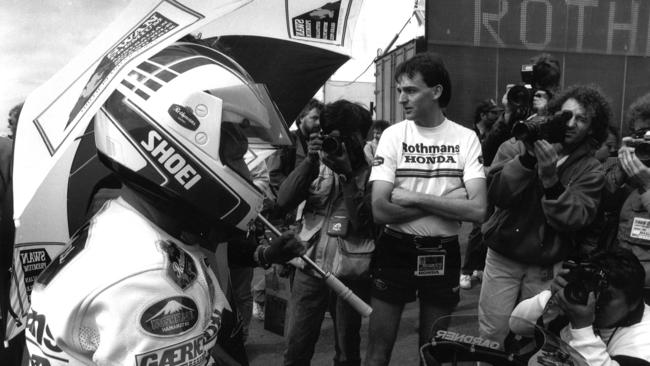
FIVE FACTS FROM 1989
— A major storm on the Wednesday night before the race caused chaos at the circuit. The security team’s campsite ended up under water.
— The race control building was previously the airport control tower from Fisherman’s Bend aerodrome which had closed in 1957. The tower was rebuilt from the original steel frame.
— Gardner’s Honda was loaned for the launch of the Swan sponsorship in Chloe’s bar at Young and Jackson’s. But the only way to get the bike upstairs was by one man manhandling it up a small twisting staircase “The bike was vertical as it went up the stairs, the only way to get it up,’’ Bob Barnard said.
— Motorcycle clubs and groups “policed” the behaviour in the campgrounds, effectively freeing up police to manage the traffic.
— A young Michael Doohan finished his first world 500cc race that day at Phillip Island. Doohan, who went on to win five straight world championships from 1994, finished eighth. Five other Australians started — Kevin Magee (fourth), Michael Dowson (ninth), Greg Drew (retired), Malcolm Campbell (retired) and James Judd (retired).
THE FIRST FIVE OF 1989 AT PHILLIP ISLAND
1. Wayne Gardner (Aus) Honda 48min 15.940sec
2. Wayne Rainey (USA) Yamaha +0.35017sec
3. Christian Sarron (Fra) Yamaha +0.47015
4. Kevin Magee (Aus) Yamaha +1.51013
5. Eddie Lawson (USA) Honda +10.970

